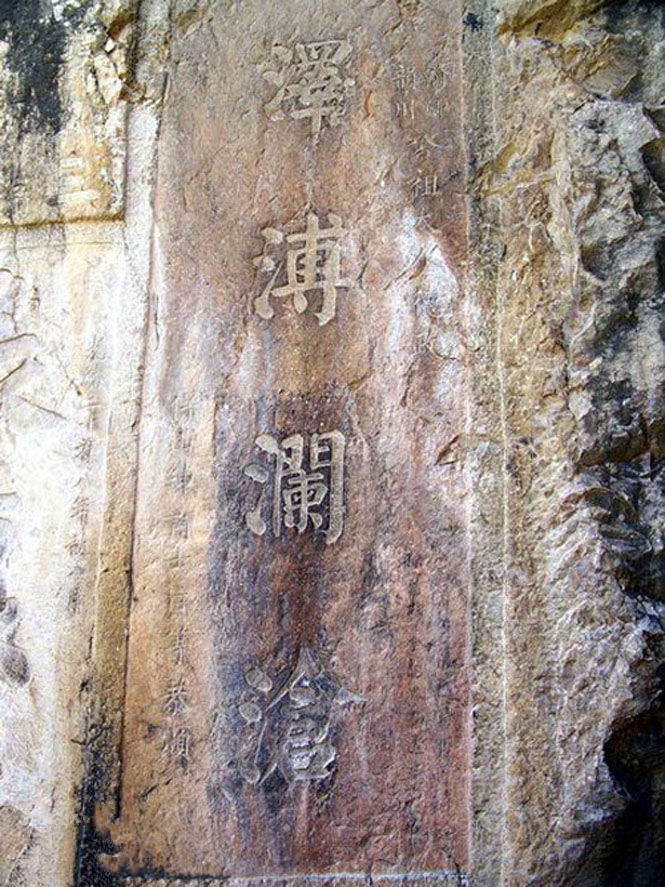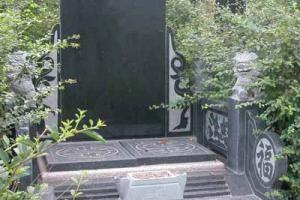Laojiangpo Cliff Inscriptions in Yongping County, Dali
Overview
Laojiangpo Cliff Inscriptions老江坡摩崖石刻, also known as Jihong Bridge Inscriptions (霁虹桥摩崖石刻), are located on a towering, steep stone wall on the west bank of the Jihong Bridge in Yongping County (永平县) of Dali (大理). This monumental rock face features inscriptions left by literati, officials, and elites during the Ming (明) and Qing (清) dynasties, who were inspired while traveling along the ancient Bonan Road (博南古道). The inscriptions, often large and bold, showcase a variety of calligraphic styles—clerical, cursive, and regular—and reflect the artistic and literary talents of their creators.
The inscriptions can be categorized into three main types:
- Praises for the Jihong Bridge: Such as the “Jihong Bridge” from the Kangxi era (康熙) and “The First Bridge in Southwest” from the Chenghua era (成化).
- Admiration for the ancient ferry: Like “The Key to the South” from the Kangxi era and “Vertical Cliff” from the Jiajing era (嘉靖).
- Celebration of the intelligence of laborers, exemplified by the inscription “Accessible by Human Power,” where each character stands about 1.8 meters tall.
These inscriptions are a significant blend of historical value, calligraphy, literature, and stone carving art.
Historical Background
Located at the boundary between Baoshan (保山) and Yongping County, the Jihong Bridge (霁虹桥) spans the Lancang River (澜沧江) over a cliff. Before 1986, it was the oldest iron cable bridge in China. Historically, it served as an important crossing point on the ancient Silk Road, particularly the “Southwest Silk Road” which began in Xichang (西昌), traversed through Yunnan (云南), and continued into Myanmar and India.
The Jihong Bridge’s historical significance can be traced back to the Han Dynasty (汉朝) when it was known as the Lanzhin Ancient Ferry (兰津古渡). The bridge underwent various transformations: from a vine bridge in the Eastern Han Dynasty to a wooden bridge in the Yuan Dynasty (元朝), and finally to an iron cable bridge in the Ming Dynasty.
Major Inscriptions
Among the noteworthy poems and couplets inscribed here is Zhang Han’s (张含) poem “Lanjin Crossing” (兰津渡), which captures the essence of the region:
Lanjin Crossing 山形环抱哀牢国,
千崖万壑生松风。
石路真从汉诸葛,
铁柱或传唐鄂公。
桥通赤霄俯碧马,
江含紫烟浮白龙。
渔梁鹊架得有此,
绝顶咫尺樊桐宫。
Translation: The mountains embrace the country of Ailao,
A thousand cliffs and ravines give birth to the pine wind.
The stone path truly follows Zhuge Liang (诸葛亮) of Han,
The iron pillar might convey the legacy of Tang’s E Gong (鄂公).
The bridge reaches the azure sky overlooking the green horse,
The river contains purple smoke floating the white dragon.
The fishing bridge is supported by this,
At the peak, we are merely inches from the Palatial Pine.
This poem, along with others, serves to praise the bridge’s historical significance and its majestic presence.
- “The First Bridge in Southwest” (西南第一桥)
- Type: Carved in regular script
- Dimensions: Height 0.75m, Width 0.55m
- “Cangshui Feihong” (沧水飞虹)
- Type: Cursive script
- Dimensions: Height 0.56m, Width 0.53m
- “Bili Wanren” (壁立万仞)
- Type: Regular script
- Dimensions: Height 0.75m, Width 0.60m
- “Jihong Bridge” (霁虹桥)
- Type: Cursive script
- Dimensions: Height 1.10m, Length 3.25m
- “Tian Nan Suo Yao” (天南锁钥)
- Type: Regular script
- Dimensions: Height 1.32m, Length 4.15m
- “Tan Qing Bi Li” (潭清壁立)
- Type: Regular script
- Dimensions: Height 0.9m, Length 1.65m
- “Yuchi Binghu” (玉尺冰壶)
- Type: Regular script
- Dimensions: Height 0.50m, Length 1.20m
- “Xuan Ya Qi Du” (悬崖奇渡)
- Type: Regular script
- Dimensions: Height approximately 1.2m
More Inscriptions
诗刻“兰津渡”。阴刻,直书,由左至右,共15行,通体长1.95米,高0.70米,明嘉靖乙巳(1545年)九月保山知县孙术刻石。其诗如下:
山形环抱哀牢国,千崖万壑生松风。
石路真从汉诸葛,铁柱或传唐鄂公。
桥通赤霄俯碧马,红含紫烟浮白龙。
渔梁鹊架得有此,绝顶咫尺樊桐宫。
禺山外史张含题
诗刻“永昌刺史帅诸儒迎我澜沧桥亭,缅怀先哲,遂勖诸生”
节彼博南山,澜沧出其下。
远悌一沟悬,临流三峡泻。
中有霁虹桥,白日苍龙跨。
汉使渡旌旗,明时通教化。
铁柱插银波,斯人伊吕亚。
振铎我刚来,炎炎当仲夏。
夷道愧逢迎,驱聚不遑舍。
北望衮衣垂,绝城都弃拓。
为语青衿人,营营休日夜。
舟揖济洪川,讵但兹梁架。
秦和胡尧时书
“过兰津桥拜武侯祠”
江流石壁两争雄,想像当年佐汉功。
八阵风云凭掌上,三分天地自鉴中。
南荒香火产遗圮,两蜀丹青肖旧容。
堪笑薛能诗胆放,妄言只合卧为龙。
万历辛丑秋月楚人江盈科
丁未春澜沧江铁桥成记之此诗”
千寻铁锁付波臣,欲济无梁我怆神。
归物任随流水去,扪心有黍之类身。
生将白石驾鼋鼍,百炼钢丝笑谢他。
桥底乖龙应帖耳,倘教段手复如何。
望洋慷慨发长叹,此是西南要害关。
不见古人与来者,向谁堪表里河山。
永昌太守谢宇俊题石
诗刻“丁未仲夏”
重言政事属雷同,澹写沧江五霁虹。
几废几兴工浩大,丰绅丰官计将穷。
幸赍不假他人才,点石无忘太宇功。
物我变迁难预料,者番砥柱永沉江。
海州韩熙华书
“兰津桥”
铁作瓦梁跨至虹,日南重泽交华通。
丹崖百转悬天畔,银汉双津入斗宫。
寻冰东来神禹绩,渡泸西下武侯功。
午干今际君王照,拟颂皇阁赋未工。
Current Status
As of now, there are over 30 existing inscriptions, with 28 of them still recognizable despite some damage due to natural erosion or human activity. The site represents the largest collection of cliff inscriptions in Yunnan (云南) and serves as a precious cultural artifact that combines literature and calligraphy.
How to Get There
Transportation Options
- By Car:
- From Dali, take the road to Yongping County. The East route offers more scenic views and historical sites along the way.
- Public Transport:
- Buses operate between Dali and Yongping, with stops in various towns.
- Walking:
- For the adventurous, a hiking path leads from nearby villages down to the cliff inscriptions.
Travel Tips
- Best Time to Visit: The ideal seasons are spring and autumn when the weather is mild and the views are clear.
- Safety Precautions: Wear sturdy shoes and be cautious when navigating the rocky paths.
- Photography: Bring a good camera to capture the inscriptions and stunning landscape; early mornings offer the best light.
- Local Guides: Hiring a local guide can enrich your understanding of the inscriptions and the history of the area.


















